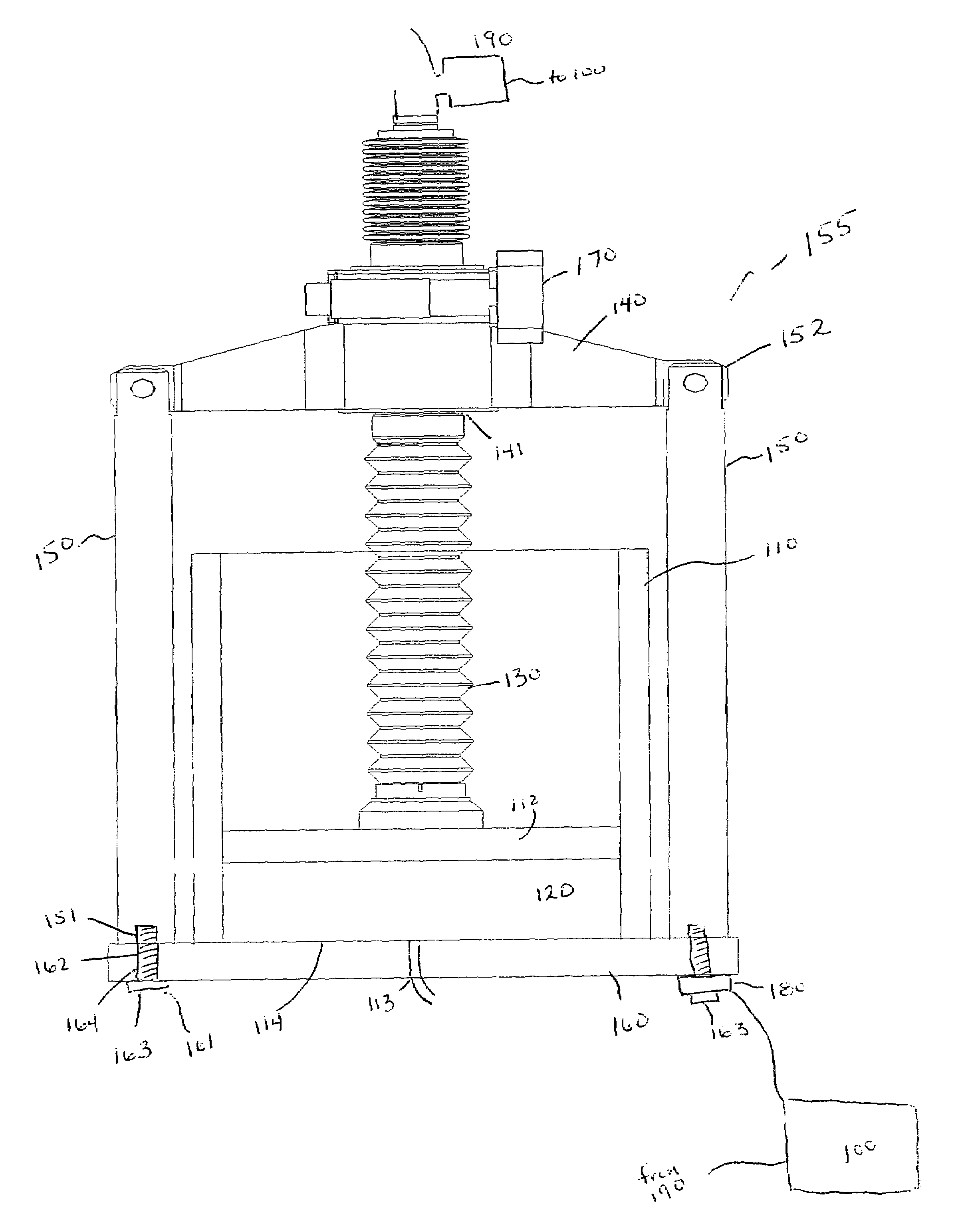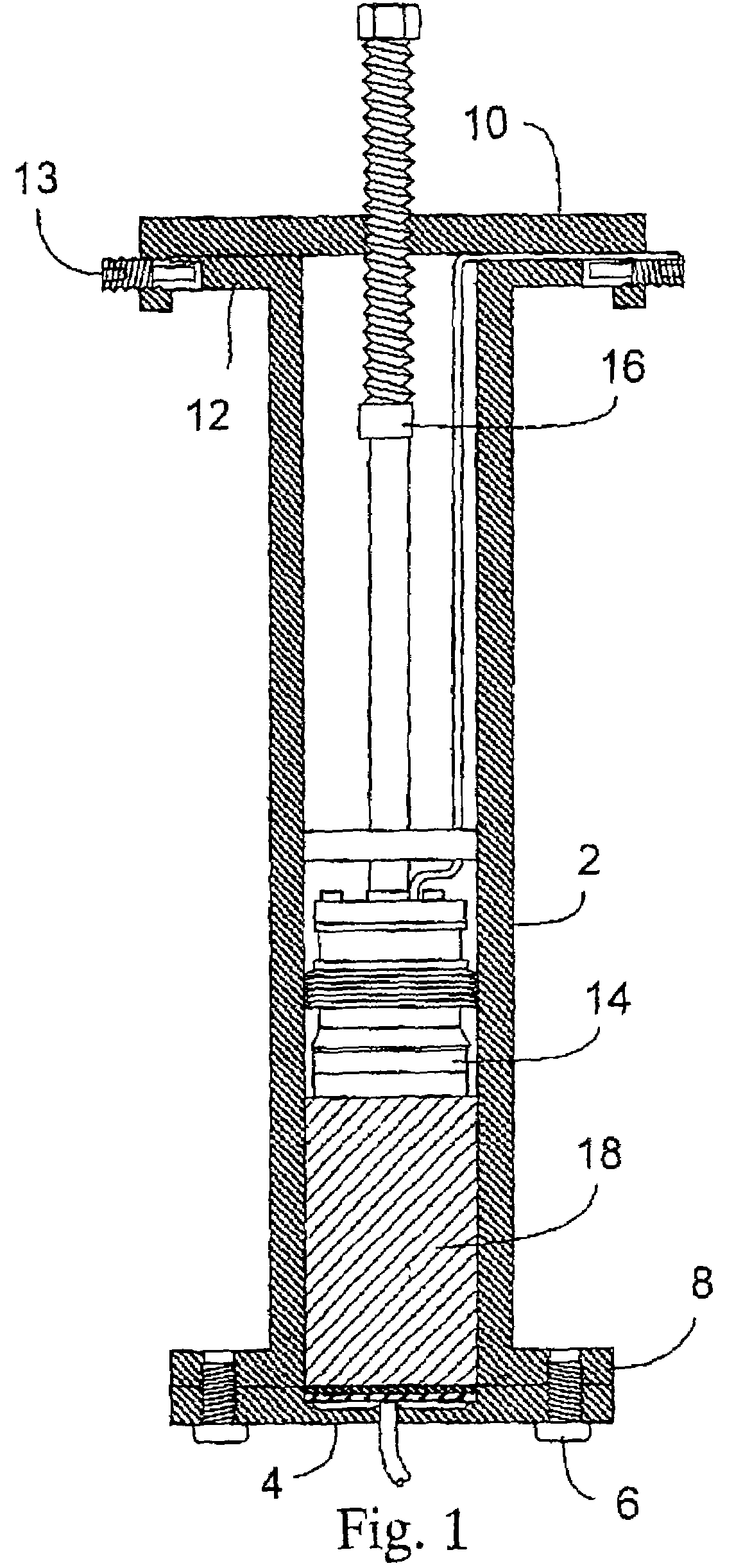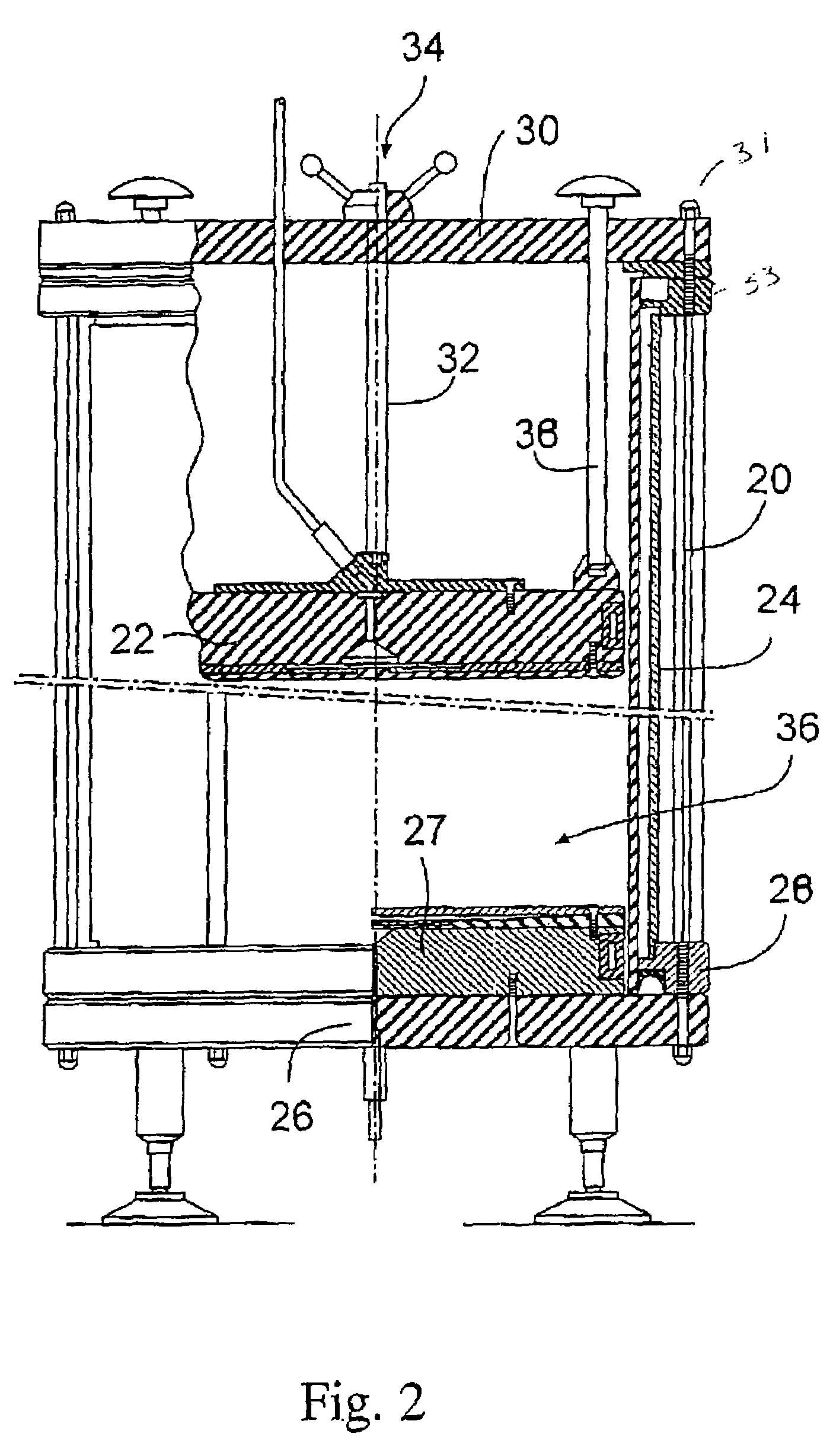System for automated compression of chromatography columns
a technology of chromatography column and automatic compression, which is applied in the field of chromatography columns, can solve the problems of affecting the function of packed columns, and affecting the efficiency of separation, and achieves the effect of increasing efficiency
- Summary
- Abstract
- Description
- Claims
- Application Information
AI Technical Summary
Benefits of technology
Problems solved by technology
Method used
Image
Examples
first embodiment
[0042]The control system of the present invention can be utilized in a number of different ways. In a first embodiment, the control system is used only between separation cycles to correct for any changes in the height of the media bed 120 that occurred during the previous cycle. In this embodiment, the position of the adjustable bed support within the cylinder is held constant throughout the separation cycle, and then its height is adjusted after the completion of the cycle.
second embodiment
[0043]In a second embodiment, the control system is continuously operational, thereby constantly adjusting the pressure exerted on the media bed by changing the position of the adjustable bed support within the cylinder. Due to the precision required, this embodiment preferably utilizes a PID controller. One skilled in the art will recognize that a continuous control system can be approximated through the use of a sampled system, whereby the load cell and pressure transducers are sampled at periodic intervals and adjustments to the vertical position of the adjustable bed support are made in response to these sampled measurements.
PUM
| Property | Measurement | Unit |
|---|---|---|
| diameter | aaaaa | aaaaa |
| diameter | aaaaa | aaaaa |
| bed height | aaaaa | aaaaa |
Abstract
Description
Claims
Application Information
 Login to View More
Login to View More - R&D
- Intellectual Property
- Life Sciences
- Materials
- Tech Scout
- Unparalleled Data Quality
- Higher Quality Content
- 60% Fewer Hallucinations
Browse by: Latest US Patents, China's latest patents, Technical Efficacy Thesaurus, Application Domain, Technology Topic, Popular Technical Reports.
© 2025 PatSnap. All rights reserved.Legal|Privacy policy|Modern Slavery Act Transparency Statement|Sitemap|About US| Contact US: help@patsnap.com



